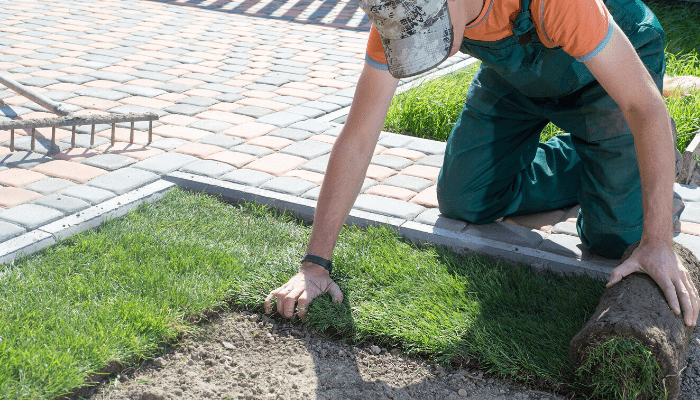A Judgment-Free Guide to Selling a House in Poor Condition
Posted by admin on
If your house has broken shutters, stained carpet, and a leaky roof, you’re not alone. According to the latest American Community Survey data, 65 percent of homes in the United States were built before 1989, and the median age of an owner-occupied house today is about 40 years. Homes get used. Things break or wear out. Repairs are needed.
But what if you want to sell your home and can’t afford to make all the repairs, or you don’t think you have the time, energy or desire to get it ready to list on the market? Selling a house in poor condition can be intimidating and it does create some challenges, but it’s definitely doable.
How you choose to sell a house in poor condition really depends on your personal goals, timeline, and financial situation. Do you need to sell fast and accept a discounted offer, or would you rather invest some time and money to command a higher price? In this guide we’ll help you evaluate what kind of shape your house is actually in, and determine which repairs and updates you should make (if any).
To get you the best information possible, we talked to Brandi Abram, a top-selling real estate agent in Lawrence, Kansas, and Jeff Lurie, a Suffolk, Virginia real estate agent who sells properties 64% faster than the average Suffolk agent, both of whom offered their expert insights on selling a house in poor condition.

Overwhelmed with Home Repairs?
Skip the hassle of arranging contractors and paying for renovations. HomeLight provides all-cash offers for homes in almost any condition nationwide.
First, let’s put away Inspection Misconception
Before we talk about how to sell a home that’s in poor condition, it’s important to discuss something we’re going to call the Inspection Misconception.
When a buyer orders a home inspection, the inspector comes to the home and inspects it (didn’t see that coming, did you?). The inspection takes between two and four hours, and the inspector looks at practically everything. They crawl through the crawlspace, walk across the roof, turn on lights, check for signs of mold, and more.
But when they’re done, they don’t rate the house as “Pass” or “Fail.” And they don’t check a box that says “Poor Condition.” So, determining what “poor condition” really means depends on a number of factors.
So let’s take a closer look at what “poor condition” could mean for your property.
What does poor condition mean?
“Poor condition” is a relative term in real estate that translates differently from market to market. “In my area, poor condition houses are ones that are considered uninhabitable,” explains Abram. “We refer to houses that are rundown, but habitable, as fair condition properties. Fair condition houses have dated finishes and fixtures, or maybe they have foundation issues.”
Lurie says that when a buyer asks for a home inspection, he typically doesn’t hear home inspectors say that a home is in poor condition, rather “they’ll say things like ‘I believe this house has good bones. It’s got a couple of repairs that need to be done, or there are major repairs that need to be done.’”
To help make sense of all this, let’s walk through a few categories that your house could fall into. Then we’ll take a look at your options for selling your house.
1. Absolutely uninhabitable
Houses that are considered to be absolutely uninhabitable have multiple issues that make them unfit for anyone to live in, likely due to safety concerns. These issues may include:
- Serious electrical issues (outdated knob-and-tube wiring; frayed wiring; etc.)
- Serious plumbing problems (leaky, corroded pipes; non-functioning water heater; etc.)
- Severe and/or extensive roof damage
- Black mold
- Lead and/or asbestos (beyond removal or abatement)
- Termite infestation (or unrepaired damage)
- Severe and/or extensive foundation issues
- Severe and/or extensive chimney damage
- Non-functioning HVAC (Heating, ventilation, and air conditioning)
2. Major repairs needed
Even if the home is habitable, major repairs can put it in the “poor condition” category according to buyers and their agents. Here is a list of several of these serious problems:
- Some electrical issues
- Some plumbing problems
- Significant roof damage
- Significant wood rot
- Significant foundation issues
- Failing, yet still functioning HVAC
- Damaged and outdated kitchen
- Damaged and outdated bathroom(s)
- Damaged flooring
- Damaged and/or non-functioning faucets/light fixtures
3. Could use some updating or in need of significant cleaning
As previously stated, “poor condition” is a relative term. While one buyer won’t bat an eye at stained flooring, another will make a mental check mark in the “poor condition” category.
Items that can put a house in this “poor condition” category include:
- Dirty, cluttered interior
- Outdated Kitchen
- Outdated bathroom(s)
- Dirty, stained flooring
- Dingy, peeling paint (not related to moisture issues)
- Outdated finishes on faucets & light fixtures
- Dead, overgrown, untended landscaping
- Weathered exterior (including peeling paint, minor wood rot, etc.)

3 ways to get a fair price
If you feel like your home falls under any of the “poor condition” categories listed above, you have three basic options to consider when you move forward with the sale.
1. Do nothing and sell it “as is”
If you have no interest in investing any money or effort into your home before you list it for sale, you can move forward and sell your home “as is”.
You’re still obligated to disclose any known issues, according to your state’s requirements, but the buyer enters the home sale knowing that they would likely be responsible for fixing these issues and any additional problems that the inspection may turn up. You are still able to negotiate with a buyer should they have requests such as repairs or concessions based on the state of the property.
If you decide to go this route, don’t be deceived by the “do nothing” mindset. While you don’t need to spend time and money on repairing major problems, it is wise to invest a little bit into your home before listing it for sale. Lurie emphasizes the importance of taking some time to clean up the property. “Taking that extra step to cut the grass or trim the bushes makes it more welcoming.”
You can net more by using nothing but your own elbow grease or a little cash to hire a pro to deep clean, declutter, and depersonalize your home:
- Deep clean: $40-65 per hour ($150-$250 for a 2,000 square-foot house)
- Declutter and depersonalize: $254-$790 for a pro organizer (process typically takes two to 10 hours, depending on the state of the home)
- Landscaping maintenance: $25-$50 for lawn care service
- Pro carpet cleaning: $75-$300 (a 1500 sq. ft. home will cost $270-$540, including labor)
2. Make low-cost, cosmetic fixes only
If your poor condition house requires a high number of major and minor repairs, it may make sense to knock out a few of the low-cost, cosmetic fixes to make your home more appealing to potential buyers.
For example, let’s say your house hasn’t been updated in 20 years — so it’s due for a new roof, the HVAC is nearing the end of its lifespan, the fixtures (lighting, faucets, appliances, etc.) are worn out and out of style, the carpet is stained, and the walls need a new coat of paint.
If you tackle the smaller jobs before listing, the big price tag items (like the roof or HVAC) that still have a few years of use left will feel manageable rather than overwhelming to potential buyers.
- Repaint interior: $1,200-$3,900 average for full home interior (an average of $1-$3 per square foot)
- Replacing outdated light fixtures: $526 on average per light fixture (this can range from $152 to $901)
- Replacing old faucets: $162-$355, on average ($254 for professional installation)
- Refinish existing cabinets: $500 average cost (ranges between $350 and $910 for professional cabinet refinishing)
You can also DIY a lot of these projects and save some cash. But even though these repairs can make the house look a little more appealing, Lurie doesn’t always recommend doing them. “If the carpet’s been there for five or six years, it’s just going to have to be cleaned. I don’t want my sellers to spend thousands of dollars changing out flooring and painting walls when somebody might not like that color.” Instead, he advises, “Let the buyer negotiate the floor coverings.”
3. Invest in some major repairs or upgrades
If your home is in truly poor condition, it may have severe problems that are too much for the average buyer to take on once you add them all together.
While it might not make sense for you to invest tens of thousands of dollars, it may make sense to make one or two major repairs to get your list price closer to what your home is actually worth.
Picking which needed repair or two you should do requires an honest assessment of what work your home needs, a little research on how much each job will cost and the average return on investment (ROI), and discussions with your agent. Zonda Media’s Cost vs. Value Report offers insights into the national averages for the cost of home improvement projects along with their ROI. Here are the top five:
-
Garage door replacement:
- Project cost: $3,907
- Resale value: $3,663
- ROI: 93.8%
-
Manufactured stone veneer:
- Project cost: $10,386
- Resale value: $9,571
- ROI: 92.1%
-
Minor kitchen remodel (midrange):
- Project cost: $26,214
- Resale value: $18,927
- ROI: 72.2%
-
Siding replacement (fiber-cement):
- Project cost: $19,626
- Resale value: $13,618
- ROI: 69.4%
-
Window replacement (vinyl):
- Project cost: $19,385
- Resale value: $13,297
- ROI: 68.6%
And a bonus for those with a smaller budget:
-
Entry door replacement (steel):
- Project cost: $2,082
- Resale value: $1,353
- ROI: 65%
These ROI values reflect the effect that rising material costs of 2020 and 2021 had on projects and the return that was gained after paying additional cost for materials. On average the ROI fell three percentage points across all projects.
It depends on how expensive it is to fix the issues. Are we willing to let the deal fall through over a small, inexpensive repair request? Absolutely not. We’re going to fix it. However, if it needs a whole new roof, that fix may be more expensive than the seller can afford. So then it’s a ‘take it or leave it’ situation.’
 Brandi & Darren Abram Real Estate AgentClose
Brandi & Darren Abram Real Estate AgentClose Brandi & Darren Abram Real Estate Agent at Diamond Partners, IncCurrently accepting new clients
Brandi & Darren Abram Real Estate Agent at Diamond Partners, IncCurrently accepting new clients
- Years of Experience 19
- Transactions 394
- Average Price Point $137k
- Single Family Homes 360
How do I decide if it’s worth spending money on repairs?
Repair costs can add up quickly, but deciding whether or not to make them doesn’t just depend on the dollar amount.
“It depends on how expensive it is to fix the issues. Are we willing to let the deal fall through over a small, inexpensive repair request? Absolutely not. We’re going to fix it,” explains Abrams. “However, if it needs a whole new roof, that fix may be more expensive than the seller can afford. So then it’s a ‘take it or leave it’ situation.’”
When you’re teetering between the “to fix or not to fix” question, it’s important to consider these four factors:
1. Current market conditions
What are buyers buying and how fast are they buying it? That’s the burning question you need your real estate agent to answer first when considering whether or not to spend capital on your house to improve its condition.
If your property is located in a hot seller’s market where home values are rising and buyers are snapping up every house that comes available, you may be able to get away with doing less.
However, if you’re in a slower market or a full-fledged buyer’s market, then you’re better off spending a little money and effort on improving your property. If you don’t, you’ll either have to list at a rock-bottom price, or expect to sit on the market for months (which will slowly lower your list price over time).
2. Your competition
Check out comparable sales (in photos or in person) to evaluate how your home stacks up against your competition.
Let’s say every home for sale in your neighborhood has great curb appeal, updated finishes, new appliances, and brand new flooring. Chances are that your home will sell for a whole lot less than it’s worth (even in its current condition), or even worse, it’ll sit unsold indefinitely.
If however, your neighborhood has a mix of homes that cover the spectrum between completely remodeled, partially renovated, and as-is condition, then your house stands a reasonable chance of fetching a reasonable price — as long as it’s clean and decluttered.
3. Return on investment
Before diving into repairs, consider the potential return on investment. Lurie gives this example:
“I want [my clients] to get the best value, and I don’t want my clients to spend $3,000 on something that they’re only going to get $1,500 back for. So, if you can take $1,500 off the price of the house to satisfy the buyer versus spending $3,000 and only getting $1,500 back. What makes more sense?”
Abram says, “I make a list of every repair or update the house needs done in order to get a top dollar, then price out how much each item will cost to get done. Once my sellers get the list, they can decide which repairs are affordable and will provide a decent ROI.”
Lurie says that a professional real estate agent “will be able to tell you the things that need to be fixed if you’re going to maximize your value and when to just sell ‘as is’, and if [the buyer] asks for things during the inspection, then we can address them on an individual basis.”
4. Inspections and negotiations
The disclosure laws in most states require that you list all known issues about your home, but an inspection is almost guaranteed to uncover more problems. The inevitable findings in the home inspection report gives your buyer a powerful negotiation tool. After it’s over, you can negotiate on the price or consent to doing the repairs. Or you can refuse and risk losing the sale.
That’s why it’s sometimes best to fix some of the bigger issues that will definitely loom large on the inspection report, so your buyer has less leverage to renegotiate the sold price — especially if those issues have a high ROI.
If you decide to sell “as is”, the negotiations may look a little different. “Sellers don’t need to be afraid of the home inspection as long as we say up front that we’re selling ‘as is’ and not willing to make any repairs,” says Abram.
“Of course, the buyer is welcome to have a home inspection, but it’s for their own knowledge. The findings won’t impact the sale because it’s a take it or leave it situation.”
If you’re open to negotiations, Lurie says “sometimes you’re better off adjusting the price accordingly versus doing the repairs.”

More expert tips on selling a house in poor condition
Can you really sell an unlivable house?
In short, yes. You may have to rely on an investor or cash buyer who is willing to take a risk on a property that needs extensive repairs or to be torn down altogether, but it is possible to sell an unlivable house.
How do you sell a completely dilapidated property?
If the property is completely dilapidated, you will likely have to sell it “as is.” You can sell to a cash buyer, investor, someone looking for a deal, or someone who is interested in the land rather than the structures that are on it.
Can I get a cash offer on my house?
Yes! Often, cash buyers will look for houses in poor condition. And because they don’t need financing, the sale can close faster. HomeLight’s Simple Sale takes the stress and uncertainty out of selling your house, especially if it’s in poor condition. With Simple Sale, you’ll receive a no-obligation cash offer in as few as 48 hours!
Know your home’s value, no matter its condition
Every home has value — even ones in poor condition — and knowing this value is an important first step in deciding to sell your home. HomeLight’s Home Value Estimator (HVE) can give you a ballpark home value estimate in just a few minutes.
Having a trusted agent by your side can ensure that you get what your home is worth. “When you sell a poor condition house ‘as is,’ buyers are going to come in with low offers. They’re going to try and beat you up with the price,” advises Abram. “We just need to know our value so that we can stick with it.”
HomeLight’s Agent Match tool can pair you with a top-rated real estate agent in your area. With knowledge of the local market and what buyers are looking for, an experienced agent can create a plan to best market the house, regardless of its condition.
Header Image Source: (Stijn Daenens – stijn.ca / Shutterstock)
